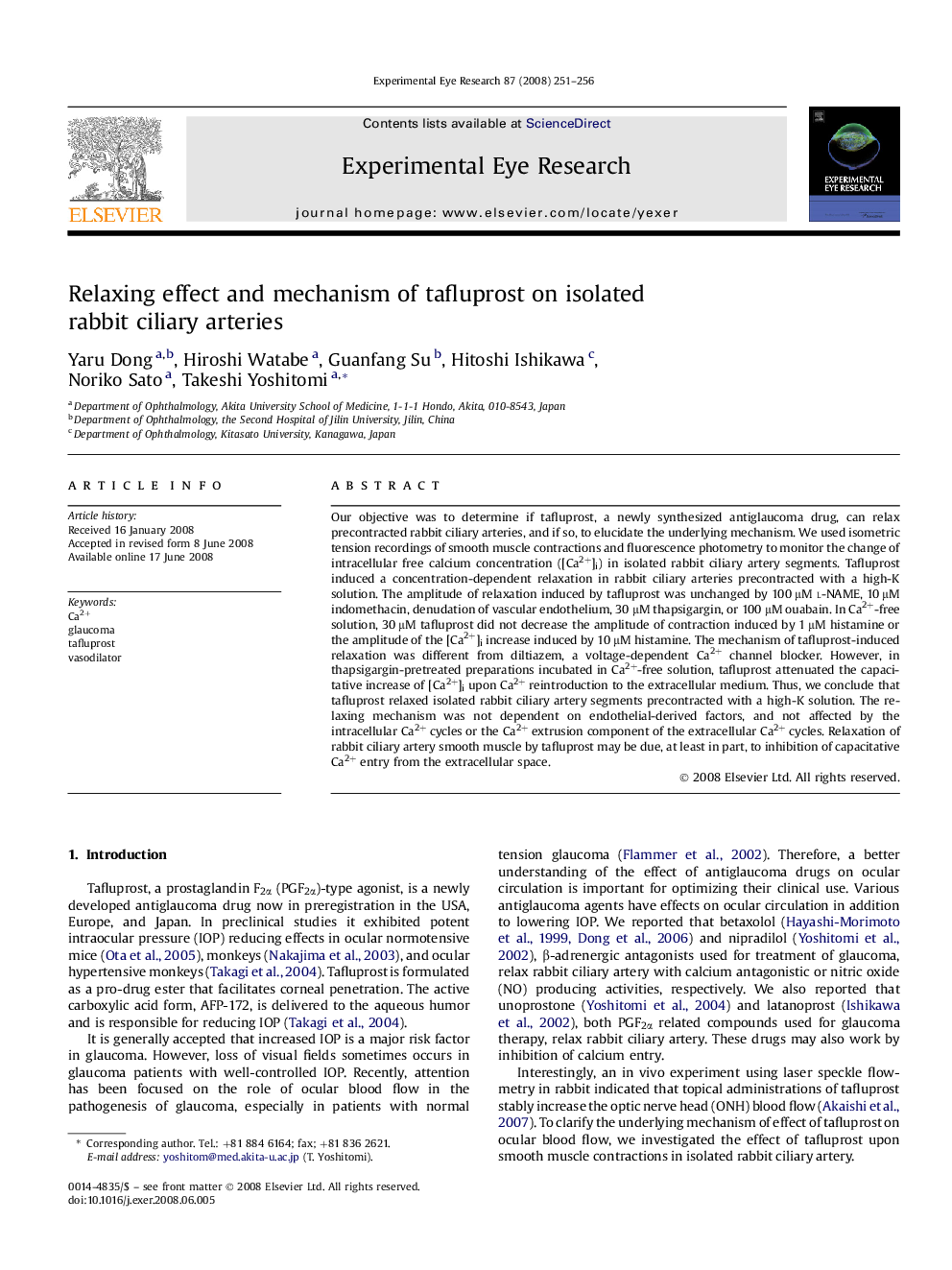| Article ID | Journal | Published Year | Pages | File Type |
|---|---|---|---|---|
| 4012067 | Experimental Eye Research | 2008 | 6 Pages |
Our objective was to determine if tafluprost, a newly synthesized antiglaucoma drug, can relax precontracted rabbit ciliary arteries, and if so, to elucidate the underlying mechanism. We used isometric tension recordings of smooth muscle contractions and fluorescence photometry to monitor the change of intracellular free calcium concentration ([Ca2+]i) in isolated rabbit ciliary artery segments. Tafluprost induced a concentration-dependent relaxation in rabbit ciliary arteries precontracted with a high-K solution. The amplitude of relaxation induced by tafluprost was unchanged by 100 μM l-NAME, 10 μM indomethacin, denudation of vascular endothelium, 30 μM thapsigargin, or 100 μM ouabain. In Ca2+-free solution, 30 μM tafluprost did not decrease the amplitude of contraction induced by 1 μM histamine or the amplitude of the [Ca2+]i increase induced by 10 μM histamine. The mechanism of tafluprost-induced relaxation was different from diltiazem, a voltage-dependent Ca2+ channel blocker. However, in thapsigargin-pretreated preparations incubated in Ca2+-free solution, tafluprost attenuated the capacitative increase of [Ca2+]i upon Ca2+ reintroduction to the extracellular medium. Thus, we conclude that tafluprost relaxed isolated rabbit ciliary artery segments precontracted with a high-K solution. The relaxing mechanism was not dependent on endothelial-derived factors, and not affected by the intracellular Ca2+ cycles or the Ca2+ extrusion component of the extracellular Ca2+ cycles. Relaxation of rabbit ciliary artery smooth muscle by tafluprost may be due, at least in part, to inhibition of capacitative Ca2+ entry from the extracellular space.
